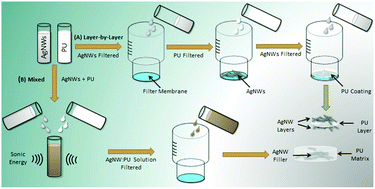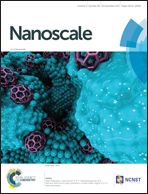Surface coatings of silver nanowires lead to effective, high conductivity, high-strain, ultrathin sensors†
Abstract
Integrated sensors for bodily measurements require a sensing material that is highly conductive, flexible, thin and sensitive. It is important that these materials are non-invasive in application but robust in nature to allow for effective, continuous measurement. Herein, we report a comparative study of two simple, scalable methods to produce silver nanowire (AgNW) polyurethane (PU) composite materials: layer-by-layer (LBL) and mixed filtration. Both types of composites formed were ultrathin (∼50 μm) and highly conductive (104 S m−1), with the LBL method ultimately found to be superior due to its low percolation threshold. Electrical resistance of the LBL composites was found to vary with strain, making these materials suitable for strain sensing. LBL composites displayed a working strain up to ∼250% and a high gauge factor (G), with values of G ∼70 reported. The sensors reported here were ∼109-times more conductive and ∼104-times thinner than their carbon-based composite sensor counterparts with similar gauge factor. This made the strain sensors presented here among one of the most flexible, highly sensitive, thinnest, conductive materials in literature. We demonstrated that with these properties, the LBL composites formed were ideal for bodily motion detection.



 Please wait while we load your content...
Please wait while we load your content...